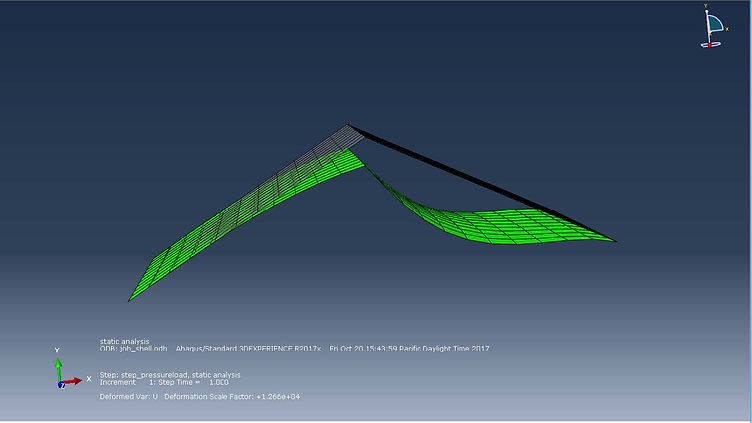M.S. Structural Engineering
2017
The Masters in Structural Engineering Program at University of Southern California allowed me to enhance my skills in structural engineering and design through explorations in more complicated methods of structural engineering that did not follow typical code based designs. In opposition to the structural engineering done within the Undergraduate B.S. Civil Engineering Building Science Degree, the masters discourse focused largely on seismic and vibrational analysis of structures and independent research into advanced engineering topics. Within this degree program, elements of computer programming and related structural analysis software were used in order to model and analyze structural elements under complex load cases and additional consideration such as soil structure interaction (SSI) and vibrational analysis using wave equations and matrix analysis of beams and columns. Furthermore, advanced classes in both steel and reinforced concrete design taught how to analyze structures and simplified structural models with seismic load cases, utilizing analysis of neutral axis, stresses, and strains in order to do so. Summaries of significant subjects explored within the M.S. Structural Engineering Degree can be seen below.
Finite Element Analysis
In order to further develop methods of structural design and engineering, seismic cases were considered, prompting a need for non-linear analysis and related programming and analysis software. In order to complete this analysis, programs such as FEM3D were used to analyze the reactions of a particular element - including beams, columns, plate, and wall sections - in a mesh type of section, breaking down the stresses and strains per a small unit of measurement.
In the course which covered this topic, Finite Element Analysis was taught both in theory as well as by utilizing programs to complete analysis of structural members. With respect to theoretical analysis, hand calculations were utilized in order to calculate virtual work, member stiffness matrices, and element assembly matrices in order to keep elements and their related reactions in order. Once these relatively simple methods of finite element analysis were taught, mass matrices were included in analysis as well as assumed damping matrices to allow the solution of complex energy equations to be solved for. These member, stiffness, damping, and mass matrices were solved in both three dimensional and two dimensional cases with considerations for nonlinear analysis and elastic stability. Examples of FEM3D coursework can be seen in this section, which display member deformation under external loading in either point load, distributed load, or applied moment.

2D Plate: Element Nodes
2D Plate: Deformation


2D Plate: Stress, S22 Principal Direction
3D Shell: First 5 Significant Mode Shapes under Encastre





MATLAB Analysis of Structures
In MATLAB programming of structures, a simplified SDOF model was considered in order to make computations and matrix development more simple, as well as create more accurate time history analysis response graphs. In this small project for a class, students were asked to create a realistic 5-story simplified SDOF structure created from a MDOF 2 column and single slab bay structure. In this case, equivalent stiffness equations were utilized assuming Wide Flange columns of varying stiffness to create the stiffness matrix and sample floor masses for which the wide flange beams would support to create the mass matrix. Then, fast fourier transformations paired with time history analysis of natural frequencies was used to solve for the response of each floor level under excitation of a sample wave. The plotted result of each floor's displacement can be seen below.

Graduate Publication: Intelligent Base Isolation
My favorite area of exploration while in the M.S. Structural Engineering Program had to deal with the mitigation of earthquake wave energy through intelligent methods of base isolation. Many structures use methods of base isolation, however these are quite rudimentary and simplistic, using only mechanical methods of base isolation to reduce damage to the above ground structure. However, through explorations in material properties and their interaction with seismic waves, specifically damaging surface waves in combination with the effects of soil structure interaction, insight can be made into other composite materials that protect the base (foundation) of a structure to reduce incident wave energy as a whole. The publication below explores many types of intelligent base isolation methods, either new or old fashioned, and recommends the best possible solutions and an outlook toward advancing base isolation using composite materials, otherwise known as "metamaterials" in the future.